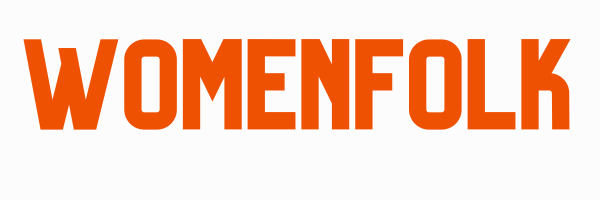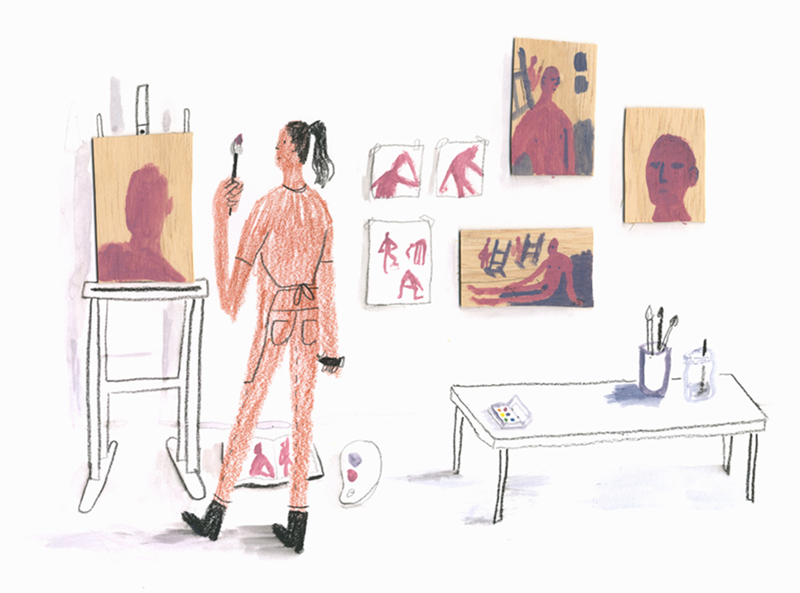SHARON ROSS
Sharon Ross is an illustrator and animator working in Belfast. She experiments with traditional mediums, processes and materials, informed by a background in Textiles and interests in Fine and Folk Art. She is passionate about creating characters and stories that capture a sense of mood. Her mixed Northern Irish and Norwegian heritage is a strong source of inspiration, and is influenced by cultures, animation and comics.
We chatted to Sharon about the imagery and techniques behind her work and here's what she had to say.
What illustration techniques did you experiment with before you settled on your current style and what led you to pick it?
I think we all go through a lot of different phases with our style. I was always really into comics growing up, and for a long time I think I was trying to draw like a comic book artist, but I gradually migrated towards different things. It’s interesting getting back into experimenting with little short comic-like pieces, but coming at it with a new approach. Any art that appeals to you seems to stick with you a little bit. I think style is just a process of adding in lots of different things along the way and mixing it all up together and seeing what happens.
I studied Fashion and Textiles before deciding that illustration was more along the route I felt myself more drawn towards. I’ve tried using textiles in my illustrations, but it didn’t really feel like the way I wanted to primarily work, though it’s something I could return to from time to time. I still have that interest in tactile qualities that you get a little bit nerdy about as a textiles person, and maybe that’s why I veered towards a textural, painterly approach. I started experimenting a lot with paint in the last year of my illustration and graphics degree, where one of my main projects was a hand painted animation that took about 6 months’ work. It was through the process of working on it that I really started to learn how to use paint and developed my own techniques for using it, so it’s probably how I feel most confident and natural working. I was looking at a lot of abstract art and trying to animate in a very loose sort of a way, and that definitely had a huge role in shaping how I work now.
We had the illustrator Kitty Crowther visit us in our final year and she very kindly gave us some helpful critique and advice on our work. She advised me to paint everything as one piece rather than digitally piecing together a final image. I think it was a big turning point for me. I now try to work up an illustration as fully and spontaneously as possible, trying to trust the paint and just see what happens. I think when something is a little bit off or wonky, it has a real charm precisely because of that and not in spite of it. That’s one of the reasons why expressionist painting and folk art appeal to me so much I think. Stepping back a bit from computers feels quite true to those inspirations too.
Do you think it's important to have a particular look to your work and why?
I think having a coherent look to your work help builds your brand as a creative professional. It gives you your own usp. Editing down your portfolio can also help to establish a sense of a consistent style. Sometimes you might decide to cut out work, but if you regularly review your portfolio it might come back to the surface later. For me, the key to finding a look was finding my medium and deciding that was going to shape my style, and that really helped get to that place of starting to produce a coherent body of work. Even though I feel like I’m still finding my feet as an illustrator, I think because I use the same painterly textures it still has a consistency, I hope. You eventually arrive at something that works for you and makes your work feel ‘you’ but it just takes a bit to get there.
It’s a process of also developing the confidence and the eye for what works and what doesn’t. It can be a hard to keep up that confidence if you find that maybe work is slow to come in, which I’m finding can be quite normal when just starting out as an illustrator. When you're not very busy, it can be easy to doubt that maybe your style isn’t quite right or maybe isn’t commercial enough. You might find yourself having to ask pretty big questions as a freelancer, like would I still want to do the work I’m doing even if I wasn’t getting a steady income. If the answer to that is yes, then I think you can take confidence in knowing that you love your style and way of working. Most of the illustrators I know have part time jobs to help support doing the work they love. We’re a bohemian kind of folk I think. I still like doing little experiments just to mix things up and try to keep my work fresh for myself, going more abstract, or trying out something strange like making gifs from little ceramic pieces or monoprints. If you do exercises to get out of your creative comfort zone, it’s easier to just let go and let the art happen, so it can be almost like a form of mindfulness to allow yourself to play around a bit.
What imagery influences your work and how do you source it?
In terms of looking for style influences, I think a lot of creatives are magpies and gather together all sorts of things to inspire them. Pinterest and Tumblr are great for inspiration hunting. They throw a nice jumble at you and help you find new things. Blogs are also great online resources, and fashion blogs often end up inspiring paintings. I think it would be fair to say I mostly look at painters as my main style inspiration, fine and folk artists and other illustrators and designers that use paint, to see if I can pick up ideas. Finding what you’re most drawn to can really help shape the look you decide eventually will become your signature.
I think I can be a bit of a geek about research. I really enjoy it, even just for its own sake. Museums and art galleries are always good to go to for inspiration and lots have amazing archives online that are perfect to spend an afternoon browsing, especially if you’re working on something inspired by a particular historical period. Libraries are fantastic and when I was studying I’d often go and spend whole mornings or afternoons in the uni’s arts libraries finding things to look through and absorb for inspiration. There’s still something so lovely about leafing through a printed book. I love collecting those sorts of coffee table books of artwork or photographs to have on my shelves should I ever need to take one out and look at nice things. Then, I think just keeping my eyes and ears open. People watching is great for the studying the little details that filter into making characters, watching how people interact and overheard conversations and looking at how people dress or hold themselves. I find drawing from life or taking photos of environments helps me put together a scene that feels like it has a character of its own too.

